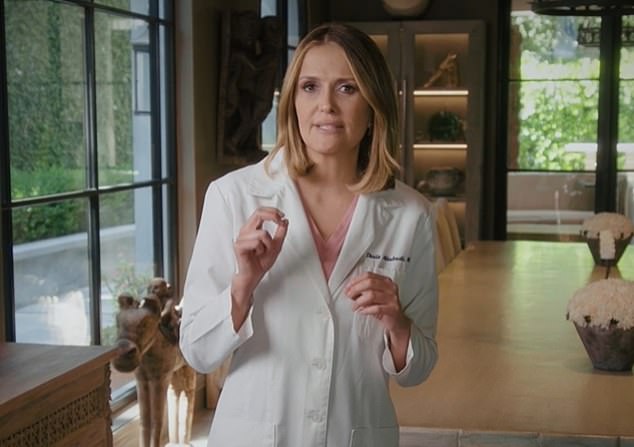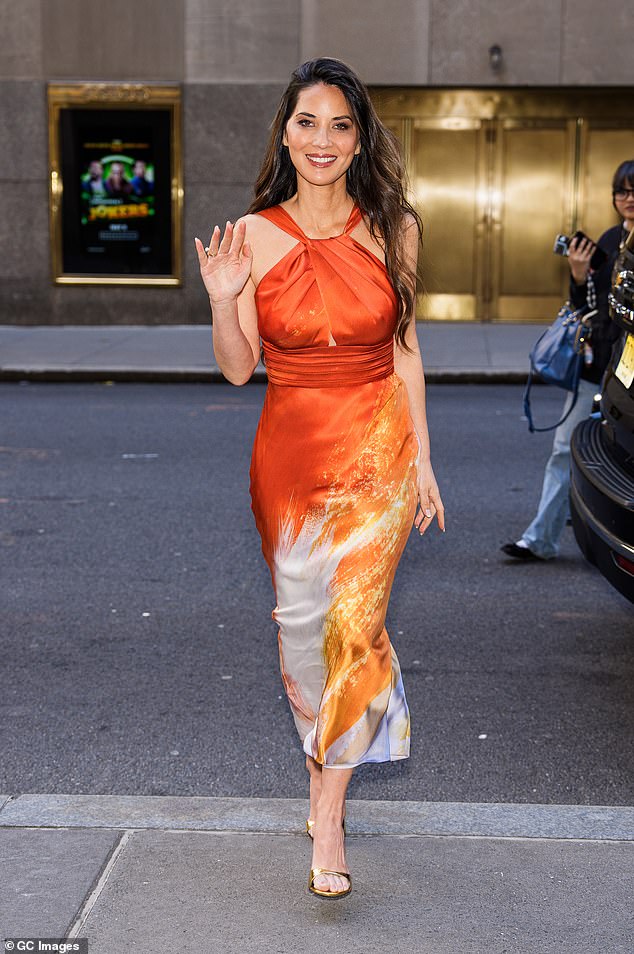Olivia Munn’s doctor reveals the rapid online test that flagged her cancer – and urges people in their 20s to take it
With cancer rates soaring among young people, oncologists are urging Americans to manage their risk with simple tests that can be done at home.
The test that saved the life of actress Olivia Munn, who recently received a shocking breast cancer diagnosis at the age of 43, is called the risk assessment tool, according to her gynaecologist, eminent obstetrician Dr Thais Aliabadi.
Speaking at Fortune’s Youth Cancer Summit this week, Dr. Aliabadi said it is used by oncologists across the country and recommended for some who are too young to qualify for mammography.
Although an inherited gene mutation is often considered the leading cause of premature cancer, experts are increasingly warning of a collection of other factors that can greatly determine the risk.
This includes a woman’s age at her first menstrual period, age at the time of the birth of a first child, and a family history of breast cancer.
FIND DETAILS BELOW ON HOW TO TAKE THE TEST
Olivia Munn has revealed she was diagnosed with luminal B breast cancer last year after undergoing four operations in the past ten months. She credited her OBGYN (here) with ‘saving my life’

Dr. Thais Aliabadi emphasizes that risk takes more into account, such as the age of the woman during her first menstruation
The number of breast cancer cases in children under 50 has increased over the past twenty years.
A recent study of Canadian researchers discovered that over the past thirty years, the number of breast cancer cases among people in their twenties has increased by 45 percent.
Diseases of all types have increased by a third among people under 50 in the past 20 years.
However, screening tools rarely apply to women under 40, creating a gap that allows more women to fall through the cracks.
The concern is so great that the U.S. Preventative Services Task Force recently lowered the minimum age for screening from 50 to 40.
The breast cancer risk assessment, carried out by Dr Aliabadi, was able to identify Olivia Munn’s risk, despite mammograms and other scans missing the tumour.
The most popular risk assessment tool is the National Cancer Institute’s Breast Cancer Risk Assessment Tool (BCRAT)also known as the Gale model, after Dr. Mitchell Gail, who developed it in 1989. The test can be accessed through the NCIBC website.
Dr. Aliabadi said: ‘If you are tall, if you have had children after 30, if you have dense breasts, if you have a family history, if you are overweight, you add up your risk factors and you get a risk score.
‘If it is 20 percent or more, it means you are in the high-risk category and you should start imaging at age 30, not at age 40, and add MRI to that.
“That’s exactly what I did for myself and Olivia Munn.”
Research shows that approximately 12 percent of American women will be diagnosed with breast cancer during their lifetime.
And Dr. Aliabadi says predicting which women will be among that 12 percent is challenging.
She continued, “Olivia had a negative mammogram and a negative ultrasound, but because her lifetime risk was 37 percent, I added an MRI (a more detailed scan that can detect tumors in dense breasts).
“All her friends told her why is your doctor so paranoid? And because of my paranoia, she had three cancerous lesions on her right breast and one on her left breast.”
Women who start menstruating at a younger age are exposed to estrogen for a longer period of time, making them more susceptible to cancer.
This also applies to women who enter menopause later in life, because they are also exposed to estrogen for a longer period of their lives.
And pregnancy changes breast cells for the better, making them more resistant to cancer. If you have a baby at an older age, this protective effect is reduced.
The test takes into account age, age at first menstruation, age at birth of a first child (or has not yet given birth), family history of breast cancer (mother, sister or daughter), number of breast biopsies in the past, number breast biopsies showing atypical hyperplasia, and race/ethnicity.

Ms. Munn had a negative mammogram and a negative ultrasound, but because her lifetime risk was 37 percent, Dr. Thais Aliabadi added an MRI
Although mammograms are recommended for women age 40 and older, the do-it-yourself risk assessment tool can be done independently at home at any age.
A high-risk score is considered to be above 20 percent.
And with the number of cancer cases under 40 rising, this could be a lifesaver. An MRI is generally not recommended as a screening test on its own because certain cancers that would be found with a mammogram may be missed.
But it has been known to find what is missed. Women at very high risk, like Olivia Munn, are recommended to have a mammogram or MRI every six months.
In addition to dense breast tissue, an MRI can also detect small lesions and detailed information about a tumor, its size, shape and extent.
However, doctors are often reluctant to order MRIs because of the risk of detecting false positives – lesions that would never become cancerous.
MRIs can also be prohibitively expensive, especially if a person does not have health insurance.
Dr. Aliabadi says genetic tests that show whether a person has genes that could increase risk would also be useful.
